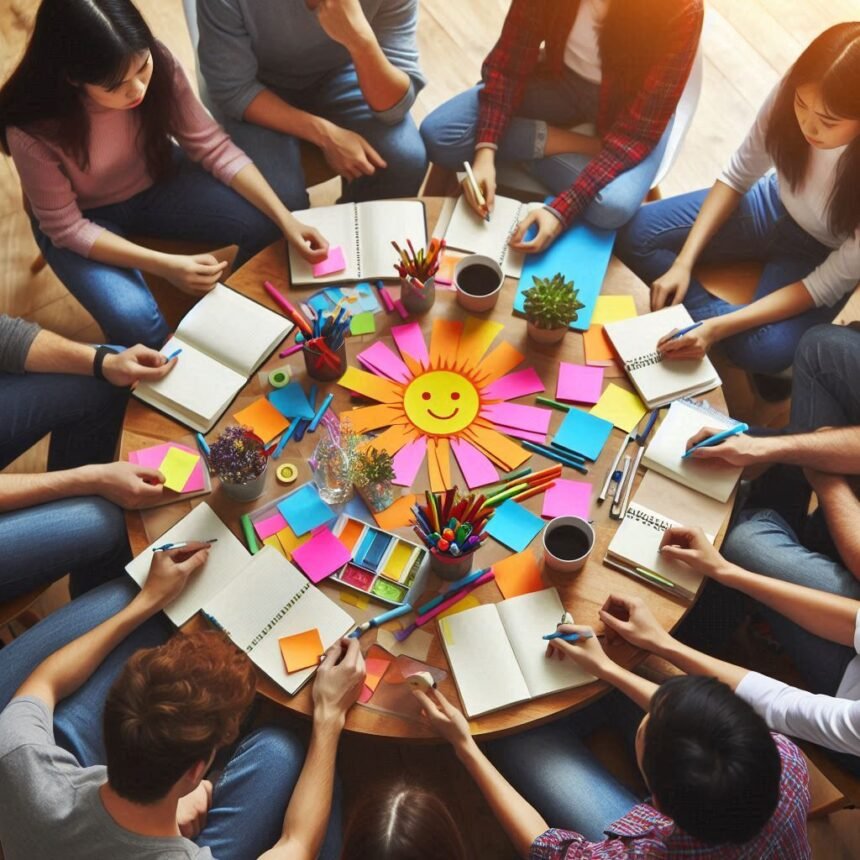Introduction to Creativity
Creativity is a magical force that resides within all of us. It’s the spark that ignites our imagination, allowing us to dream big and break free from conventional boundaries. Whether you’re an artist painting a masterpiece, a scientist making groundbreaking discoveries, or someone simply trying to come up with a unique solution to everyday problems, https://quesonlosvaloreseticos.com/definicion-de-creatividad creativity plays an essential role in shaping our world.
But what exactly does it mean to be creative? Is it just about artistic expression, or is there more beneath the surface? Understanding creativity opens doors not only for personal growth but also for innovation in various fields. Join me as we dive deeper into this fascinating concept and uncover its significance in our lives. Let’s explore how nurturing your inner creativity can lead to profound changes and enrich your everyday experiences!
The Definition of Creativity
Creativity is often described as the ability to generate new ideas or concepts. It transcends mere artistic expression and penetrates various aspects of life, including problem-solving, innovation, and personal growth.
At its core, creativity involves thinking outside established boundaries. It’s about connecting seemingly unrelated dots and forming something unique. This can manifest in art, writing, science—or even everyday decisions.
Understanding creativity requires recognizing it as a dynamic process rather than a fixed trait. Everyone possesses creative potential; it just needs nurturing to flourish.
The beauty of creativity lies in its diversity. What sparks one person’s imagination might not resonate with another. This individuality makes the exploration of creativity both fascinating and enriching for everyone involved.
Understanding the Importance of Creativity in Our Lives
Creativity is a vital force that shapes our daily experiences. It empowers us to express ourselves in unique ways, allowing personal stories and emotions to take center stage.
In an ever-evolving world, creativity fosters adaptability. Those who think creatively can navigate challenges with innovative solutions. This skill becomes essential as we face new circumstances in life and work.
Moreover, creativity enriches relationships by enhancing communication. When individuals share their ideas and perspectives, they build connections based on understanding and appreciation.
It also plays a crucial role in mental well-being. Engaging in creative activities can reduce stress levels and promote mindfulness. As we immerse ourselves in the process of creating, we often find clarity amidst chaos.
Nurturing creativity opens doors to endless possibilities. It’s not just about art or music; it influences every aspect of life from problem-solving at work to finding joy in everyday moments.
How Creativity Enhances Problem-Solving Skills
Creativity serves as a vital tool in enhancing problem-solving skills. It allows individuals to view challenges from multiple angles, leading to innovative solutions.
When faced with an issue, creative thinkers can break free from conventional patterns. They explore unconventional ideas and approaches that might not be immediately obvious.
This flexibility encourages experimentation. Trying out different strategies helps identify what works best in various situations. Creative problem-solvers are often more resilient because they adapt easily when initial plans fail.
Moreover, creativity fosters collaboration. Brainstorming sessions bring diverse perspectives together, sparking new insights that enrich the solution process.
By embracing creativity, we empower ourselves to tackle complex problems with confidence and imagination. This mindset transforms obstacles into opportunities for growth and discovery.
Cultivating Creativity: Tips and Techniques
Cultivating creativity is a journey of exploration. Start by setting aside time each day for free thinking. Allow your mind to wander without constraints; this can spark unexpected ideas.
Engaging in different activities also fuels creative thought. Try drawing, writing, or even dancing. Each new experience opens neural pathways and inspires fresh perspectives.
Surround yourself with diverse influences. Read books from various genres, listen to eclectic music, or attend workshops outside your field. Exposure to different viewpoints often ignites the imagination.
Don’t shy away from collaborating with others. Group brainstorming sessions can generate innovative solutions that you might not discover alone.
Embrace playfulness in your approach. Experimentation should be fun! Allow yourself the freedom to fail; mistakes are stepping stones toward greater creativity and understanding of what works best for you.
Creative Thinking vs Critical Thinking
Creative thinking and critical thinking serve different yet complementary purposes. Creative thinking is all about generating new ideas and exploring possibilities. It thrives on imagination, encouraging us to think outside the box.
In contrast, critical thinking focuses on evaluating information and making sound judgments. It demands analysis, logic, and reasoning. When faced with a problem, creative thinkers may propose innovative solutions while critical thinkers assess their feasibility.
Both types of thinking are essential in various fields—be it art, science, or business. They help individuals approach challenges from multiple angles.
Together, they create a balanced mindset that fosters innovation while ensuring practicality. Embracing both can lead to richer insights and better decision-making processes in personal and professional life. Each type enriches our understanding of the world around us, empowering us to navigate complexities with confidence.
Challenges to Creativity and How to Overcome Them
Creativity often faces numerous challenges that can stifle our imaginative potential. One major hurdle is the fear of failure. This anxiety can prevent individuals from taking risks and exploring new ideas.
Another obstacle is the influence of rigid structures, whether in workplaces or educational settings. These environments can limit creative expression by prioritizing rules over innovation.
Time constraints also play a significant role. When under pressure, people tend to revert to familiar patterns instead of venturing into uncharted territory.
To overcome these barriers, it’s essential to create an environment that fosters experimentation. Embrace mistakes as part of the learning process rather than setbacks.
Setting aside dedicated time for creativity can help too. Allowing yourself moments without interruptions encourages fresh thoughts and solutions.
Engaging with diverse perspectives further fuels creativity, breaking down mental walls and opening up new avenues for exploration.
Conclusion: Embracing Your Creative Potential
Embracing your creative potential can be a transformative journey. It opens doors to new possibilities and enhances the way you experience life. Creativity is not just about artistic expression; it’s a vital skill in problem-solving, personal growth, and innovation.
Recognizing the value of creativity allows individuals to approach challenges with fresh perspectives. By fostering an environment that encourages exploration and experimentation, we cultivate our imaginative capabilities. Whether through art, writing, or even everyday tasks, tapping into creativity enriches our experiences.
As you navigate this path, https://quesonlosvaloreseticos.com/definicion-de-creatividad remember that everyone has unique talents waiting to be discovered. Embrace your curiosity and allow yourself to think outside the box. Engage with different ideas and practices—these will ignite your imagination.
By nurturing your creativity daily, you’ll find it becomes an integral part of who you are. Celebrate each moment of inspiration as a stepping stone toward self-discovery and fulfillment. Your creative journey awaits; take the first step today!







